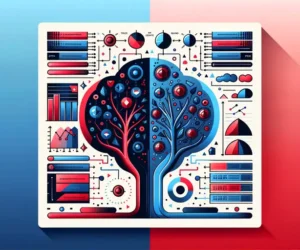
Interactive Music Generation: Algorithms that Learn from User Input

Introduction
In the increasingly digital world, the intersection of technology and creativity has given rise to an exciting new frontier: interactive music generation. This innovative concept uses algorithms to create music that adapts and evolves based on user feedback, transforming the creative process into a collaborative experience. While traditional music creation often involves a solo artist or a band, interactive music generation allows listeners to become participants in the artistic journey, shaping the soundscape to reflect their own preferences.
In this article, we will explore the fundamental principles behind interactive music generation, looking closely at various techniques and algorithms that enable this unique form of art. We’ll discover how these systems learn from user input to produce music that is not only enjoyable but also personalized. From historical context to contemporary applications, this exploration promises to provide a comprehensive overview of this fascinating realm where technology meets artistry.
The Basics of Interactive Music Generation
Interactive music generation revolves around the idea of real-time collaboration between a human user and a computer algorithm. At its core, it seeks to enhance the experience of music creation by allowing users to influence the musical output dynamically. Understanding how this works requires a grasp of some basic concepts, including algorithmic composition, machine learning, and user interfacing.
Algorithmic composition involves creating a set of rules or procedures that guide the composition of music. These rules can be mathematical formulas, heuristic methods, or even AI-driven processes. By employing such algorithms, composers can generate vast amounts of music in a fraction of the time it would take to do so manually. Basic algorithms can produce simple melodies, but as they become more sophisticated, they can introduce varying scales, harmonies, and rhythmic complexities to produce intricate compositions.
Exploring Variational Autoencoders in Music Composition WorkflowsMachine learning, a subset of artificial intelligence, has revolutionized the way we approach many fields, including music. By using vast datasets, machine learning models can identify patterns and relationships that can mimic human creativity. When integrated into music generation, these models can learn from user preferences, adopting styles or motifs that resonate most with the listener. This adaptability is at the heart of interactive music generation, allowing it to evolve based on real-time feedback.
An essential component of the interactive experience is the user interface. For users to effectively provide feedback, the interface must be intuitive and responsive. Whether through touchscreens, MIDI controllers, or even voice commands, the ability for users to control and adjust parameters in real time is crucial. Designers focus on creating interfaces that enable effortless interaction, making the music generation process engaging and immersive.
Techniques for Algorithmic Music Generation
Numerous techniques are employed in the realm of algorithmic music generation, each with its own strengths and applications. Some of the most notable methods include Markov chains, Neural Networks, and Generative Adversarial Networks (GANs).
Markov Chains
Markov chains are a statistical method used to model the probability of transitioning from one state to another. When applied to music, a Markov chain can take an existing piece of music and analyze the likelihood of moving from one note or chord to another. This analysis generates a probability table that can be used to create new compositions based on existing pieces. One of the primary advantages of this method is its simplicity and ability to generate music that maintains a coherent style.
Collaborative AI: Working with Machines to Generate New MusicHowever, while Markov chains can produce engaging rhythms and melodies, they often struggle with the concept of long-term structure. Music tends to have sections that recur and themes that develop over time, which can be challenging for a Markov chain to replicate. Despite this limitation, the technique has been widely used in interactive music applications, providing a baseline for more complex systems.
Neural Networks
On the other hand, Neural Networks offer a more sophisticated approach to music generation. These computational models simulate the way the human brain processes information, allowing them to recognize patterns in data. In the context of music, neural networks can analyze vast libraries of music to learn how different elements—melody, harmony, rhythm—interrelate.
With the advent of recurrent neural networks (RNNs) and long short-term memory (LSTM) networks, it has become possible to generate music with more extended temporal structures. RNNs can remember previous inputs, making them particularly suited for tasks that involve sequences, such as music. The use of these more advanced neural architectures allows for the creation of music that feels more cohesive and artistically complete, making them preferable for interactive systems that aim to provide a richer user experience.
Generative Adversarial Networks (GANs)
Another groundbreaking development in music generation is the application of Generative Adversarial Networks (GANs). GANs consist of two neural networks—the generator and the discriminator—working in tandem. The generator creates music samples, while the discriminator evaluates them and provides feedback. This process continues until the generator produces music indistinguishable from that created by human artists.
Customizing AI Models for Genre-Specific Music Generation OutputsGANs offer a unique blend of creativity and realism, enabling the creation of highly original compositions while maintaining the nuances of human-made music. Moreover, they can adapt to user inputs, guiding the generator to produce sounds that align with user preferences. This interaction creates an engaging experience where users feel a sense of ownership over the music being generated.
Applications of Interactive Music Generation

The applications of interactive music generation are vast and varied, spanning multiple industries such as gaming, film, therapy, and even live performances. Each sector employs this technology in unique ways to enhance user experiences and generate novel sounds.
Gaming
In the gaming industry, interactive music generation enhances player immersion, creating dynamic soundscapes that adapt to gameplay. Instead of using fixed soundtracks, modern games often implement algorithms that generate music in response to player actions. This approach creates a responsive auditory environment that evolves with the player's experience.
Building and Refining Data Sets for Music Generation ProjectsFor example, as players move through different levels or encounter challenges, the music can shift accordingly—ramping up in intensity during moments of tension or calming during moments of exploration. This not only enhances the playing experience but also deepens emotional engagement with the game, making it feel more alive and reactive.
Film and Multimedia
In film and multimedia projects, interactive music generation offers innovative ways to score scenes based on real-time emotional feedback from audiences or directors. Films can use algorithms to adapt soundtracks to viewer reactions, effectively tailoring the viewing experience. For instance, if a scene is generating laughter or excitement, the music can shift to amplify those emotions, further engaging the audience.
This adaptability can facilitate personalized film scores, where each viewer experiences uniquely composed music, heightening emotional involvement. Furthermore, such technologies open up new avenues for musicians and composers to collaborate with filmmakers in unprecedented ways, creating soundscapes that transform the traditional film score experience.
Music Therapy
Interactive music generation also holds significant promise in the arena of music therapy. Therapists utilize music as a powerful tool for emotional and psychological healing, and the ability to generate music based on real-time user input can enhance therapeutic outcomes. By adapting melodies and rhythms to reflect patients’ emotional states, therapists can create a highly personalized therapeutic experience.
The Evolution of Algorithmic Music Generation Over the Last DecadeThis process allows patients to express themselves not just through verbal communication but also by shaping music directly. Whether it's generating calming tones for relaxation or rhythmic beats for encouraging movement, interactive algorithms can personalize music to fit the specific needs of individuals or groups. Such applications not only empower individuals but also enable therapists to address various conditions, including anxiety, depression, and trauma.
Conclusion
As we have seen, interactive music generation is an exciting and rapidly evolving field at the intersection of technology and creativity. With algorithms that learn from user input, this innovative concept is transforming how we create and experience music. From foundational techniques like Markov chains and neural networks to groundbreaking applications in gaming, film, and therapy, the possibilities are virtually endless.
Looking ahead, interactive music generation is likely to shape the future of how we engage with music and one another. The potential for deeper emotional connections, personalized soundscapes, and immersive experiences creates a compelling vision of a musical landscape enriched by technology. As artists and developers continue to expand the horizons of this field, we can expect to witness ever-increasing sophistication in algorithms and more profound interactions between users and music.
In essence, the evolution of interactive music generation not only democratizes the art form but also highlights the importance of collaboration, creativity, and emotional expression. It paves the way for a new era in music, where the boundaries between creator and listener blur, and artistry becomes a shared journey, reflecting the diverse tapestry of human experience. As we continue to explore this fascinating domain, it invites us to imagine what musical landscapes lie in wait—ready to be discovered, shaped, and cherished by us all.
Analyzing the Quality of AI-Generated Music: Research InsightsIf you want to read more articles similar to Interactive Music Generation: Algorithms that Learn from User Input, you can visit the Music Generation category.



You Must Read